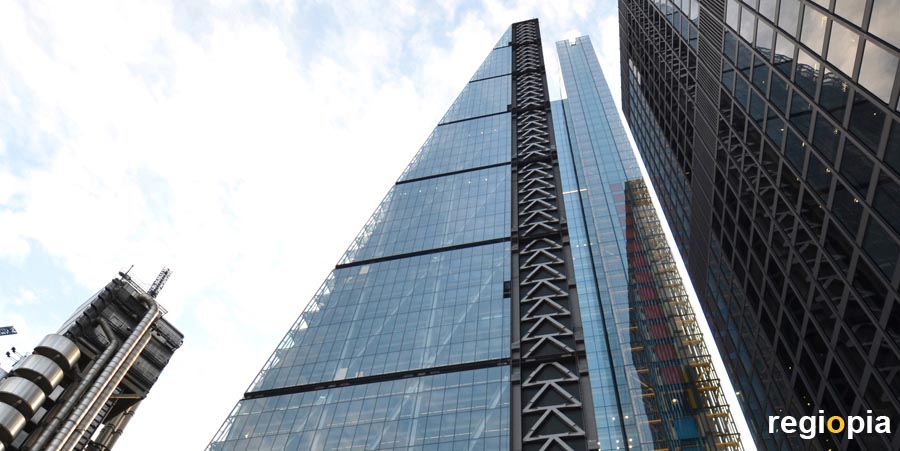
Leadenhall
The Leadenhall Building by Rogers Stirk Harbor + Partners was completed in 2014. The sloping building has an angle of 10 degrees so that the 225 m high office building does not appear directly behind St. Pauls Cathedral when looking east from Fleet Street. The wedge-shaped appearance earned the skyscraper the nickname "Cheesgrater".
The tower was built as a pure steel structure without a concrete core. The proportion of prefabricated parts that only had to be put together on the construction site of 85% is therefore remarkable. The Leadenhall Tower has 48 floors and a floor space of around 85,000 m².
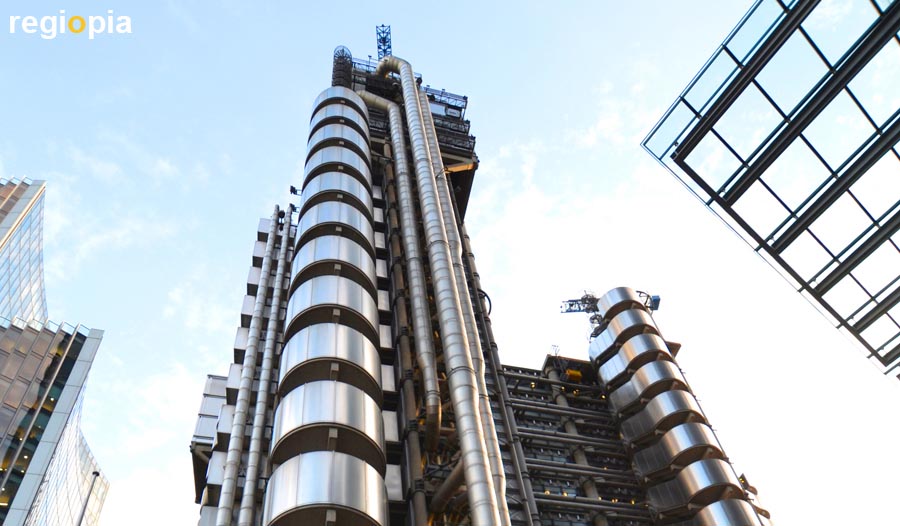
Lloyd's of London
The headquarters of the insurance company "Lloyd's of London" was built between 1978-1986. The architect Richard Rogers put all the supply functions to the outside, just like he did at the Center Pompidou in Paris. This creates space for a 60-meter-high atrium in the interior, in which escalators connect the various levels. The 88 m high office building looks like a stainless steel chemical plant. A similar concept follows the design of Sir Norman Foster for the HSBC headquarters in Hong Kong.
Buildings by Richard Rogers:
Centre Pompidou Las Arenas Barajas Terminal Skylight Tower Tribunal Bordeaux
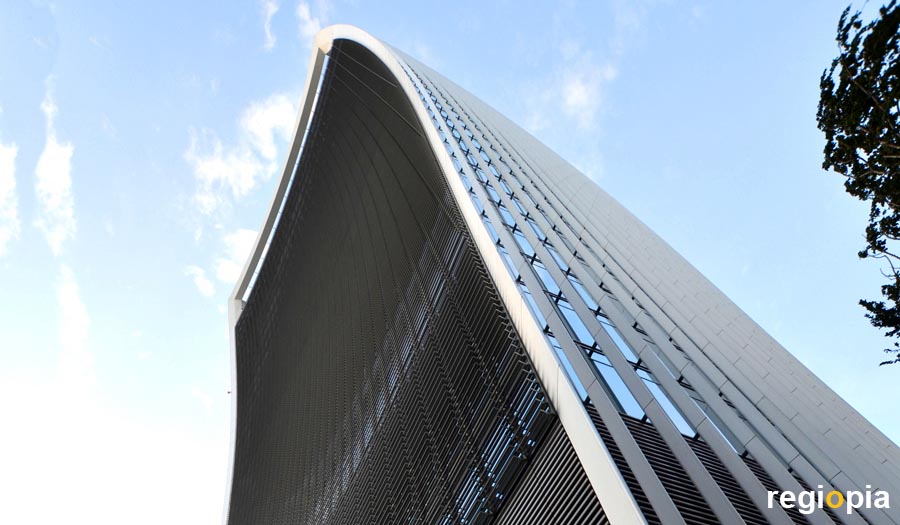
20 Fenchurch Street
The strange skyscraper of Rafael Viñoly has few friends, mocked as walkie talkie Building. It won the Carabuncle Cup for the worst building in Britain 2015. The architect from Uruguay designed a curved building that becomes wider to teh top. During construction time the unusual shape focused light beams, so that plastic parts of parked cars were melting. The problem was corrected by slats on the southern facade. The 160 m high office building was opened in 2014. There is an observation deck and Sky Garden on the top.
Buildings by Rafael Viñoly:
Tokyo International Forum 432 Park Avenue New York
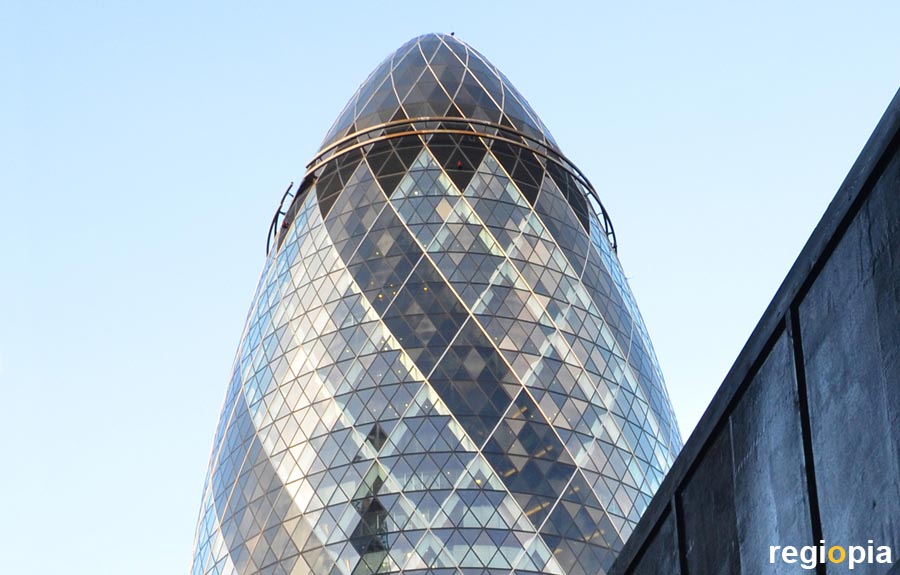
The Gherkin
The 180 m high office building designed by Sir Norman Foster was commissioned by Swiss Re. After 3 years of construction, the skyscraper was completed in 2004. Since the bank sold the office building in 2007, it is called "The Gherkin". The building, formerly known as "Swiss Re Tower", is also marketed under the name of "30 St Mary Ax". Scoundrels call the tower just "love cucumber". The curved shape is achieved by triangular and rhombic façade elements.
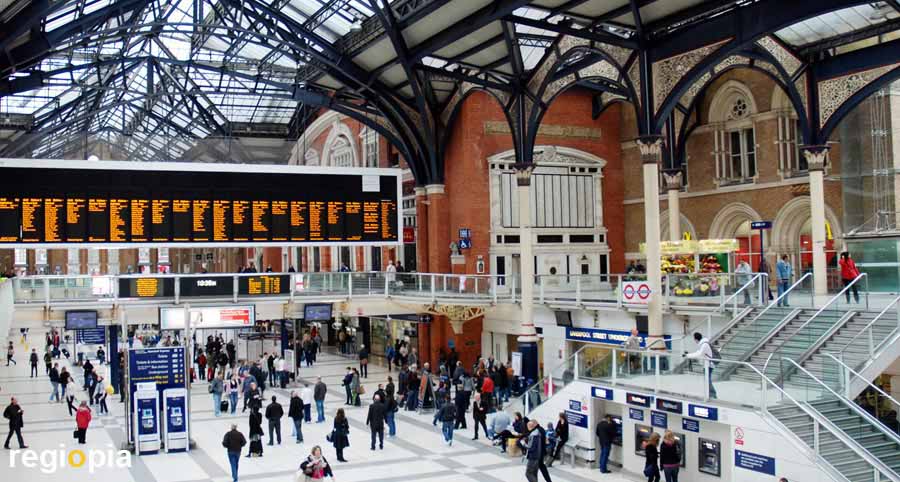
Liverpool St. Station
Liverpool Station was opened in 1874 by the Great Eastern Railway (GER). During the First World War, a bomb hit the station and killed 162 people. In 1992 the interior of the station was rebuilt. Liverpool Station is a central hub in the Crossrail construction project, which crosses central London in east-west direction. The tunnel project started in 2009 and is scheduled to open in 2020. Crossrail should also significantly shorten the travel time between Heathrow Airport and the City of London.
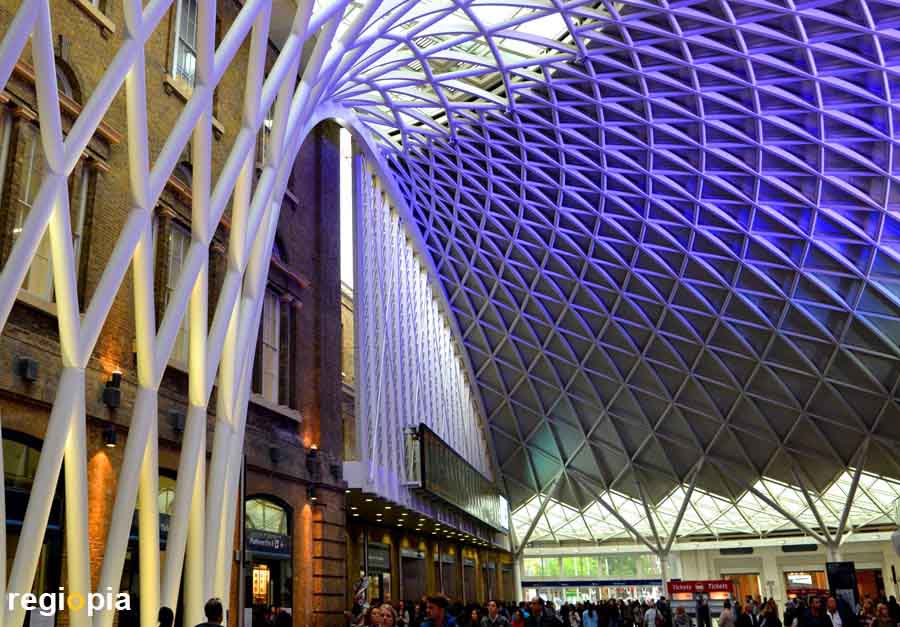
King's Cross
King's Cross station was rebuilt in 2012 by the architects John Mc Aslan + Partners. The historic train station from 1852 was built by the architect Lewis Cubitt. As a result of the renovation, the building was given a side extension in which the counter hall and shops are located. The semicircular extension between King's Cross and St. Pancras is spanned by a remarkable steel structure.
The famous platform 9 3/4 from the Harry Potter novels is also located in this hall. The baggage trolley, half of which disappears into the wall, is a well-known Instagram spot in London.
ads

Millennium Bridge
The pedestrian bridge between Tate Modern in the south and St. Pauls Cathedral was opened in 2000. Sir Norman Foster was able to convince the jury with a clear view of St. Pauls, because the supporting the suspension ropes are on the side next to the bridge. Foster developed the Millennium Bridge design together with Chris Wise from Arup. The 325 m long bridge stands on two pillars in the river Thames. Just two days after the opening, the bridge had to be closed due to horizontal vibrations. After installing vibration dampers, the Millennium Bridge was reopened in 2002.
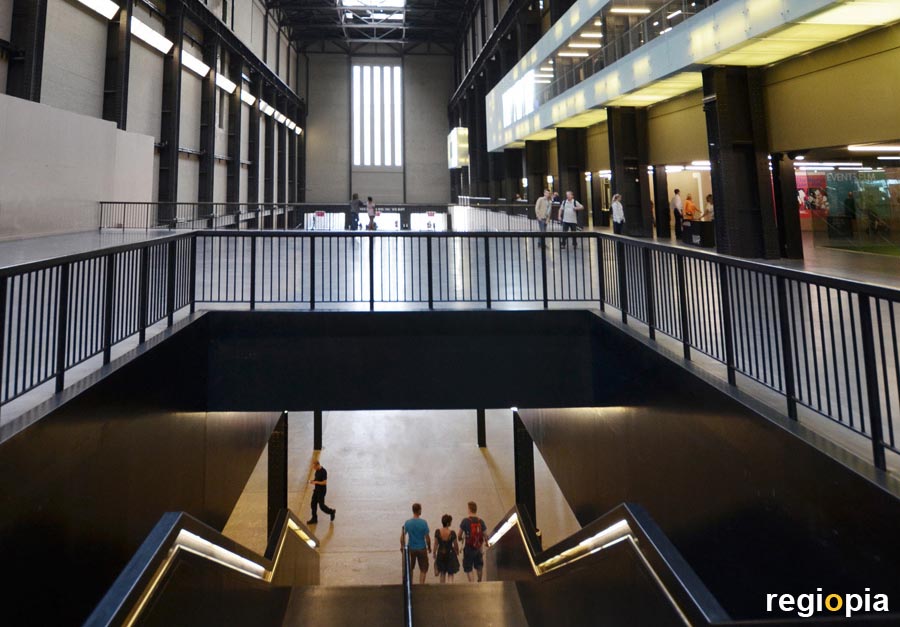
Tate Modern
The Bankside Power Station was transformed by the architects Herzog & de Meuron into the largest museum of modern art. The Tate Modern was opened in 2000. The Swiss architects obtained the former turbine hall in full hight. The northern part of the building is divided into floors, which are connected with escalators. The extension south of the power plant was also designed by Herzog & de Meuron and opened in 2016.
Buildings by Herzog & de Meuron:
Allianz Arena Fünf Höfe Elbphilharmonie Leonard St New York Olympia Stadion Beijing Museu Blau De Young Museum Architecture Guide Basel
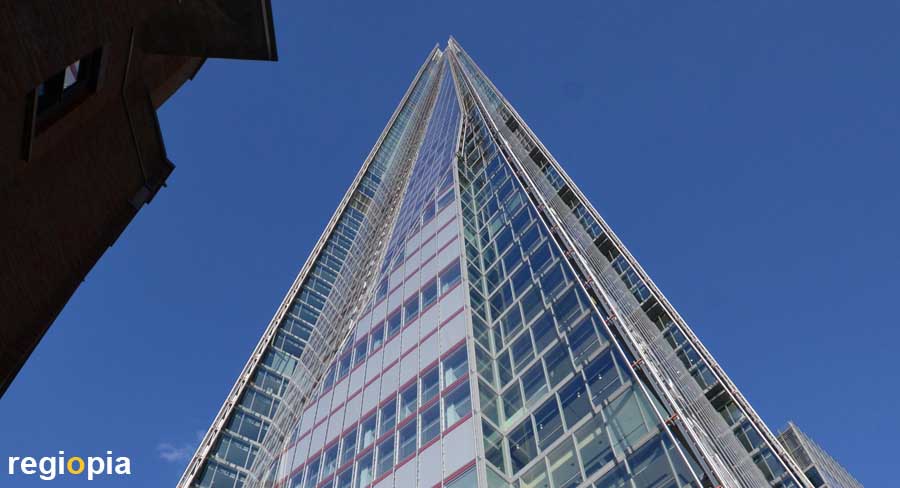
The Shard
"The Shard" by Renzo Piano was opened after four years of construction in 2013. The 310 m high glass tower was for a short time, the highest skyscraper in Europe, until the "Mercury Tower" in Moscow, with 338 m took the record to Russia. The tower on the southern bank of the Thames includes offices, a hotel, luxury apartments, restaurants, shops and a observation platform. The technique is located in the top 80 meters of the tower. The skyscraper was financed by the ruling family of Qatar.
Buildings by Renzo Piano:
New York Times Tower Fondation Beyeler Art Institute Chicago Weltstadthaus Potsdamer Platz Whitney Museum California Academy of Sciences
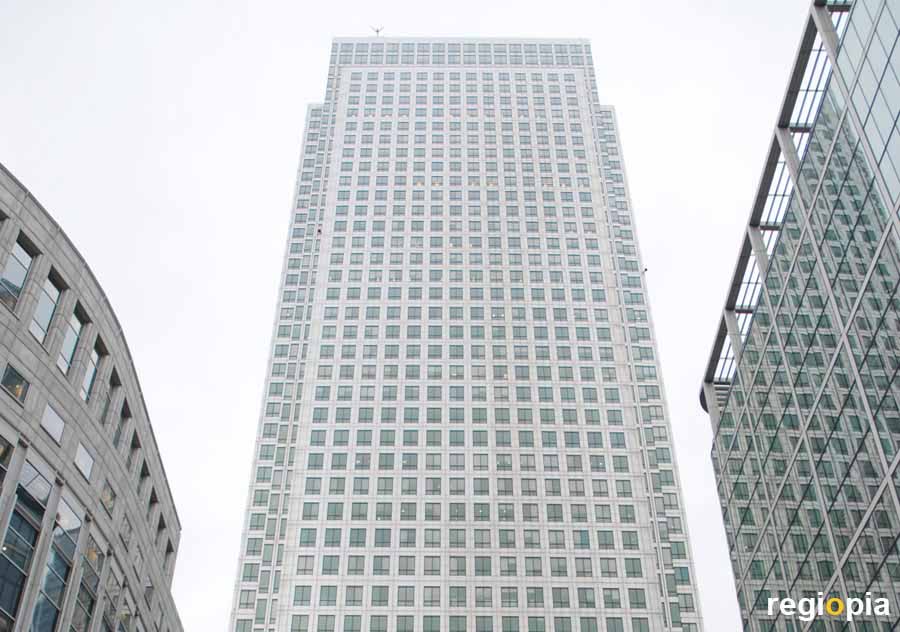
One Canada Square Tower
When the docks of the West India Company were closed in 1980, London developed the "Docklands" to become a financial center. The Canadian property company Olympia & York bought the site and built the first office towers at "Canary Wharf". The highest tower is "One Canada Square" by architect César Pelli. The 240 m high tower was the second tallest skyscraper of Europe in 1991, only the Messeturm in Frankfurt was higher. The boring business district of the "Docklands" is slowly becoming a gray residential and shopping district.
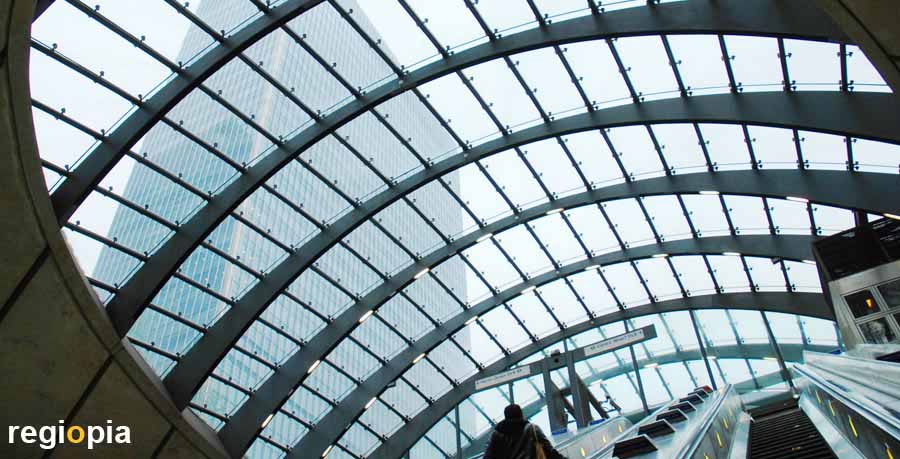
Canary Wharf Station
With the construction of Canary Wharf Station in 1999, the Docklands finally got an underground connection. Sir Norman Foster's futuristic station has an oval glass entrance and high ceilings made of light exposed concrete elements. The Jubilee Line underground station was built in an old harbor basin in open pit construction. It was intended to flood the water basin after the construction work, but for technical reasons a park was created above the station.
Buildings by Sir Norman Foster:
HSBC Hong Kong Commerzbank Tower Reichstag Hearst Tower Millennium Bridge The Gherkin Dresden Hauptbahnhof Lenbachhaus Torre de Collserola Torre Caja Madrid Vieux Port
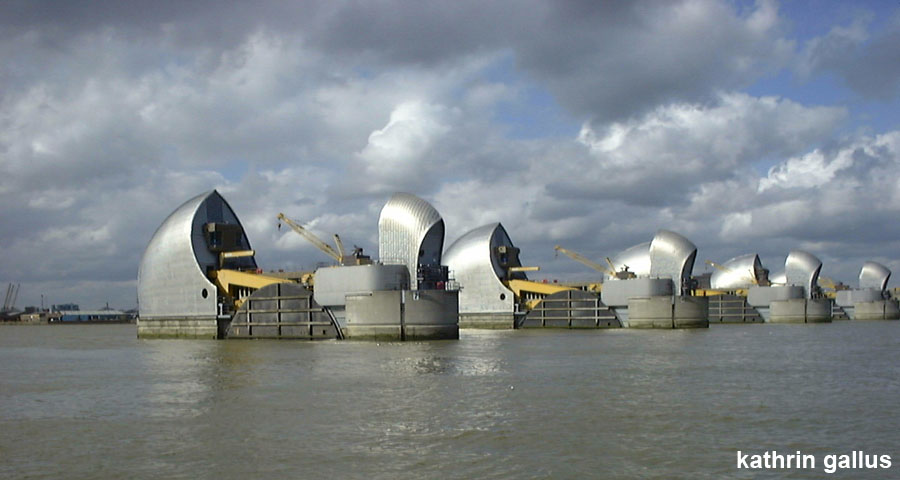
Thames Barrier
The Thames Barrier was built in 1984 to protect London from storm surges. The flood barrier is 520 m long and can be closed within 15 minutes. The gates lie on the bottom of the Thames so that shipping can continue to sail the river. The 10 flood gates can be opened, the four middle gates can allow large ships with a draft of up to 16 m to pass. The technical rooms of the flood gates are protected by curved wooden roofs, clad with stainless steel. This metal shell lets the Thames barrier shine in the light. The storm surge barrier was designed by the engineers Rendel, Palmer & Tritton.
Map of architecture in London
ads
London Architecture
ads
London Architecture
London was the center of the British Empire and thus the first world city at all. London is still the most international metropolis in Europe. This is also reflected in the building history of London. From Roman ruins to modern skyscrapers, buildings of all epochs and styles are found in London. This architecture guide shows the most important buildings from 1900 onwards. Older buildings of importance can be found under Sights of London. The buildings of this architectural guide of London are sorted according to the year of completion.
ads
regiopia architecture guides
ads


